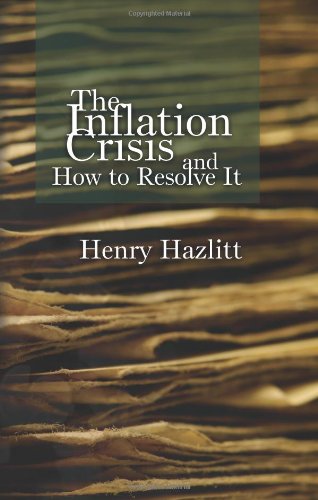

Most ebook files are in PDF format, so you can easily read them using various software such as Foxit Reader or directly on the Google Chrome browser.
Some ebook files are released by publishers in other formats such as .awz, .mobi, .epub, .fb2, etc. You may need to install specific software to read these formats on mobile/PC, such as Calibre.
Please read the tutorial at this link: https://ebookbell.com/faq
We offer FREE conversion to the popular formats you request; however, this may take some time. Therefore, right after payment, please email us, and we will try to provide the service as quickly as possible.
For some exceptional file formats or broken links (if any), please refrain from opening any disputes. Instead, email us first, and we will try to assist within a maximum of 6 hours.
EbookBell Team

4.7
26 reviewsHenry Hazlitt knew the works of Mises as well as anyone but he was not mainly a theoretician. He was a financial journalist, commentator, and interpreter of current events. In this sense, he was one of a kind: a learned economist with both feet in the real world of politics, financial markets, and the economics of everyday life.
The Inflation Crisis and How to Resolve It , newly in print in hardcover at a low price, is his masterpiece on money. The book reappears just in time: we are in the midst of an inflation crisis even if the effects are not yet fully felt.
By inflation, he didn't mean rising prices. He meant the tendency of government and the central bank to print money in pursuit of prosperity. In this sense, no book could be more directly related to our own times, as Bernanke and Company use and abuse the power of the Fed as never before.
He begins with an overview of what inflation is and covers the abysmal record of government money management. He clearly explains the cause and effect: first comes the printing and then come the business cycles and price increases. He explains that the only real cure for all of the effects is to treat the cause: end the government's power to print. For this reason, Hazlitt favors a gold standard.
The first section is perfect as an introduction to the topic but the second section is enormously valuable for anyone who wants more depth on the topic. He explains what is wrong with monetarism, what is wrong with demand-side management, what is wrong with the Phillips Curve, what is wrong with theories about "unused capacity," what is wrong with government stimulus packages, what is wrong with inflation indexing, why inflation tends to be global now, and he even adds a very thoughtful critique of Hayek's proposal for free choice among currencies: it does go nearly far enough to reform money.
From a readers point of view, Hazlitt's book is pure pleasure. As Mencken said of him, he was the only economist of his generation who could really write. He is clear as a bell, and why? Because he had a passion for explaining economics to every living person. He did not think that economics should be left to the academy or to investment firms. Like Mises, he believe it was the business of everyone.
This book came out in 1978 and it's been thirty years out of print. It was supposed to be a redo of What You Should Know About Inflation, but as Hazlitt said, it turned into a completely new book. This is one that the Mises Institute wanted to have in print for many years, and it is an event to celebrate that it is finally here, in a beautiful edition at a rock-bottom price.
191 page, Hardcover, ISBN: 978-1-933550-56-5